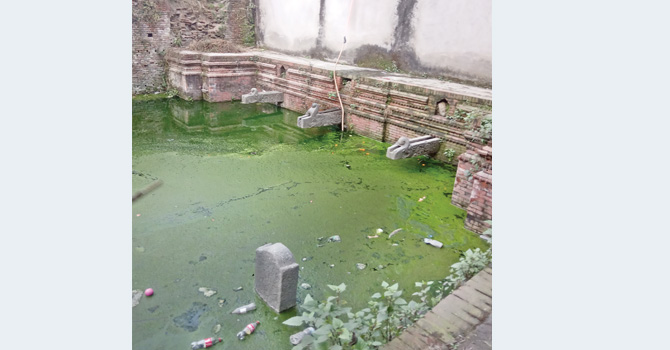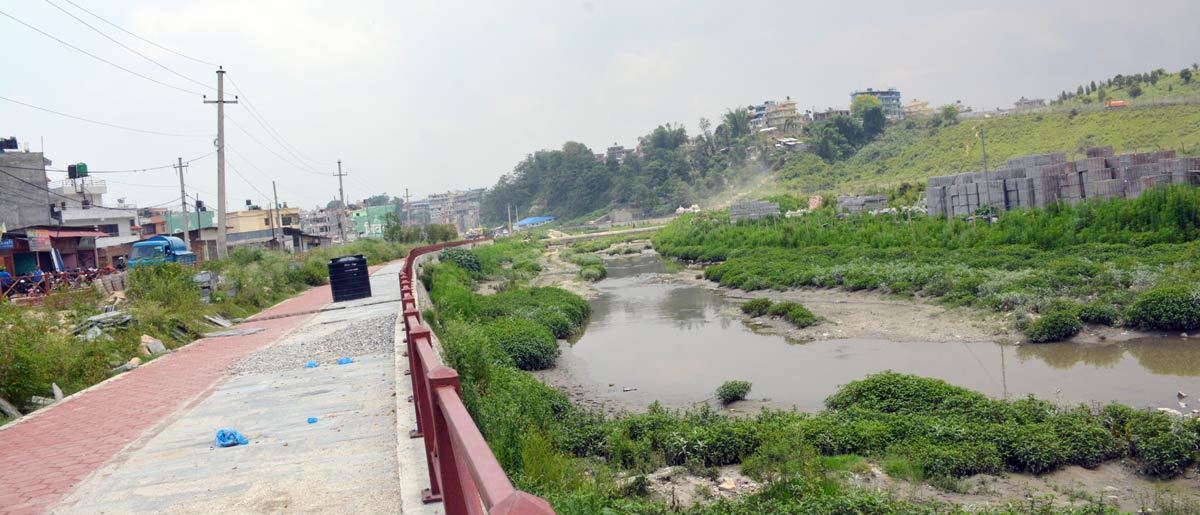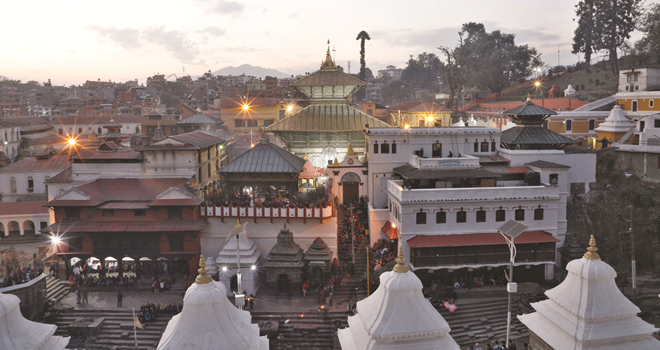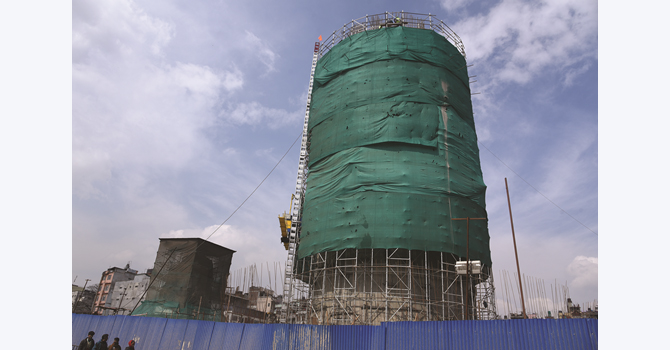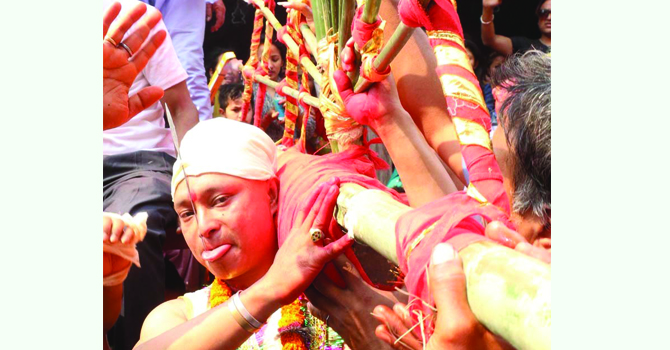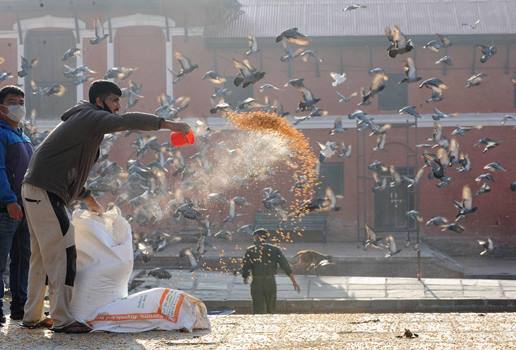Campaigners breathe life into the long-neglected stone water spouts
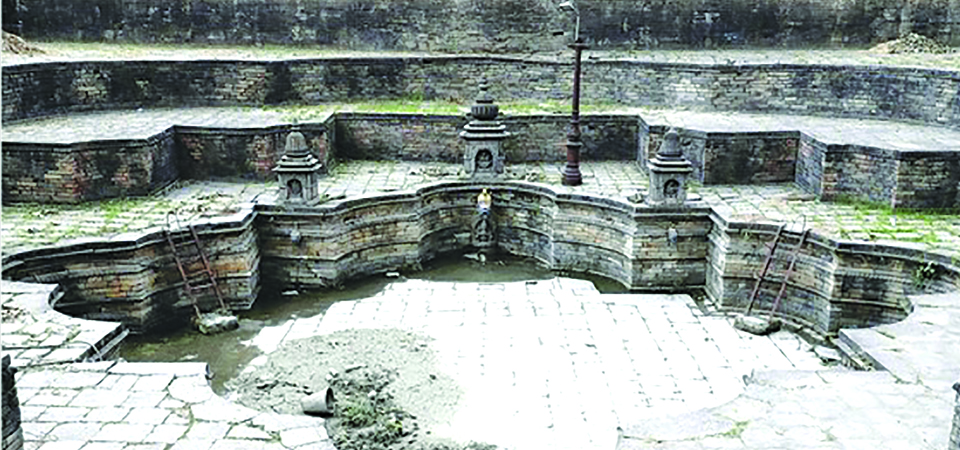
By Binu Shrestha
Kathmandu, Feb. 20: Traditional stone water spouts, which were concealed under bushes and shrubs, are now being restored back to their former glory thanks to the relentless efforts of campaigners.
Advocating the need for the preservation of such culturally significant structures since the last couple of years, these campaigners have been successful in their attempt to excavate hidden and neglected stone spouts (hitis) within the Kathmandu Valley.
The initiative began in July of 2019 following the restoration of an archaeologically valuable Sora Hiti located in the path leading to Durbarmarga from Kamalpokhari.
Sora Hiti is one of the four hitis on the four corners of Ranipokhari, which was on the verge of disappearance owing to the growing urbanisation combined with the authority’s indifference to preserving them.
A campaigner, Yadav Lal Kayastha who led the Hiti preservation and renovation campaign said that this year the Department of Archaeology (DoA) has allocated Rs. 2 million to restore it after their frequent request and delegation.
With shovels and spades at hand, the Kayastha-led group of activists comb the city searching for possible areas of the hidden or abandoned water spouts.
The group recently made another breakthrough, after excavating three water spouts around the Baneshwor Mahadev Temple, and subsequently named them Tindhara Pathsala.
The restoration process began a couple of weeks ago with the allocation of budget but not a single official from the DoA showed up to monitor the work in progress. During the excavation time, the two corner hitis were retrieved in shambles while the one in the middle had relatively faced lesser damage.
The main hiti was replaced in its original place after restoring the broken pieces. But the two other hitis are yet to be reinstalled. “Our planning is to join two other using old broken section and place them at the original place. If not possible to do so, the parts would be put on display on the premises,” said Kayastha. According to the city inventory of 1993 by the DoA, the hiti is over 700 years old and was reportedly built in the 14th century by Laxmi Das Bharu.
“Since the last 20 to 22 years, the stone spout has been reduced to a mere garbage disposal site,” said Fal Prasad Timilsina, caretaker of Baneshwor Mahadev Temple, who has been staying in the rest house within the temple premises from 1990.
Recalling his early days when he first arrived in Kathmandu from Dhading and started staying here as a caretaker, he added, “Back then, three stone spouts continuously poured water from their gaping mouths. People waited to fill in their utensils. Some bathed, others washed clothes. It was a wonderful place for the community. Sadly, today it is all a distant memory.”
The hiti premise was open, so street children often used it as their shelter. In the year 2004/5, three hitis of Sora Hiti were reportedly burnt by street children who were attempting to start a fire on a cold winter night. Unfortunately, the fire caught two of the three hitits, reducing it to shambles.
Shortly thereafter, the once lively dhungedhara (stone spout) became a spot for people to toss their garbage.
“I remember that water used to trickle down before 1999, but it dried up after Sherpa Mall started deep water boring,” he said. “I feel disheartened to see such historical structures getting destroyed and forgotten. Thankfully, campaigner Kayastha arrived here searching for Sora Hiti and finally he and his team restored the neglected hitis.”
As per campaigner Kayastha, water will soon start flowing from the stone spouts as the water channel remains intact.
In the survey report of the Kathmandu Valley Water Supply Management Board, 179 hitis were found in Kathmandu Metropolitan City. Of them, 52 have been lost while 127 are in existence. Among them, 79 have dried up, eight are on verge of drying up and 40 have water flowing from them.
Recent News

Do not make expressions casting dout on election: EC
14 Apr, 2022
CM Bhatta says may New Year 2079 BS inspire positive thinking
14 Apr, 2022
Three new cases, 44 recoveries in 24 hours
14 Apr, 2022
689 climbers of 84 teams so far acquire permits for climbing various peaks this spring season
14 Apr, 2022
How the rising cost of living crisis is impacting Nepal
14 Apr, 2022
US military confirms an interstellar meteor collided with Earth
14 Apr, 2022
Valneva Covid vaccine approved for use in UK
14 Apr, 2022
Chair Prachanda highlights need of unity among Maoist, Communist forces
14 Apr, 2022
Ranbir Kapoor and Alia Bhatt: Bollywood toasts star couple on wedding
14 Apr, 2022
President Bhandari confers decorations (Photo Feature)
14 Apr, 2022


